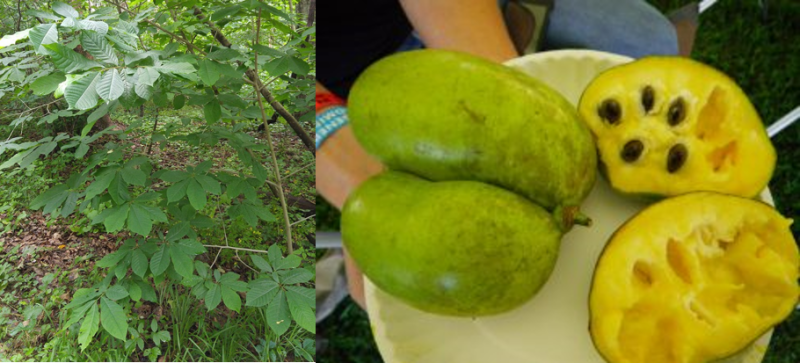Ohio's Tropical Fruit

When you think of tropical fruits, what first comes to mind? Likely you envision exotic treats like pineapples or mangoes from places like Central America; you probably don’t think of the forests of Ohio. However, Ohio is home to a native tropical fruit called the pawpaw (Asminia triloba), the largest indigenous, edible fruit in the United States (Fig. 1). If you’ve ever hiked in the woods of Ohio, you’ve likely encountered a pawpaw patch, maybe without even realizing. These trees typically grow in the understory, reaching about 25 feet at maturity. Fortunately for the trees and for us, deer find the saplings and leaves unpalatable, skipping over the pawpaw for other tasty treats. As a result, pawpaw patches are becoming more and more prevalent throughout the state.
The pawpaw fruit typically ripens in late September and early October; consumers must be quick though, as the fruit are at peak ripeness only for a short time before they turn to mush. Its short shelf life is one of the primary reasons the pawpaw is not a fruit you commonly find in the produce section of your local grocery store. If you are lucky enough to find a patch with ripe fruit to try, the fruits are often compared to banana in flavor and mango in appearance and texture and can be eaten fresh or used to make pawpaw products like ice creams.
While not a common household fruit, the pawpaw has become a cherished tree in Ohio culture. In 2009, the pawpaw was designated as the Ohio state native fruit, and there is an annual festival held in Southern Ohio dedicated to the fruit. The 21st Ohio PawPaw Fest took place this year in Albany, OH on Sept. 13-15th (https://www.ohiopawpawfest.com/index.html) and featured all things pawpaw, including a pawpaw cookoff and eating contest (and also featured a square dance led by former ABRC employee and current OSU Masters student Sean Fenstemaker).
If you are curious about the pawpaw, be sure to visit the annual festival, or simply take a walk out in the woods and hunt for Ohio’s tropical fruit!

Figure 1. Pawpaw tree growing in an Ohio forst (left) and a picture of pawpaw fruit (right.
Sources: https://www.nps.gov/articles/pawpaw.htm
https://www.metroparks.net/blog/pondering-pawpaws/
Resources
https://www.ohiopawpawfest.com/index.html
https://www.metroparks.net/blog/pondering-pawpaws/
https://www.nps.gov/articles/pawpaw.htm
Written by TPS Fellow Katie D'Amico-Willman
